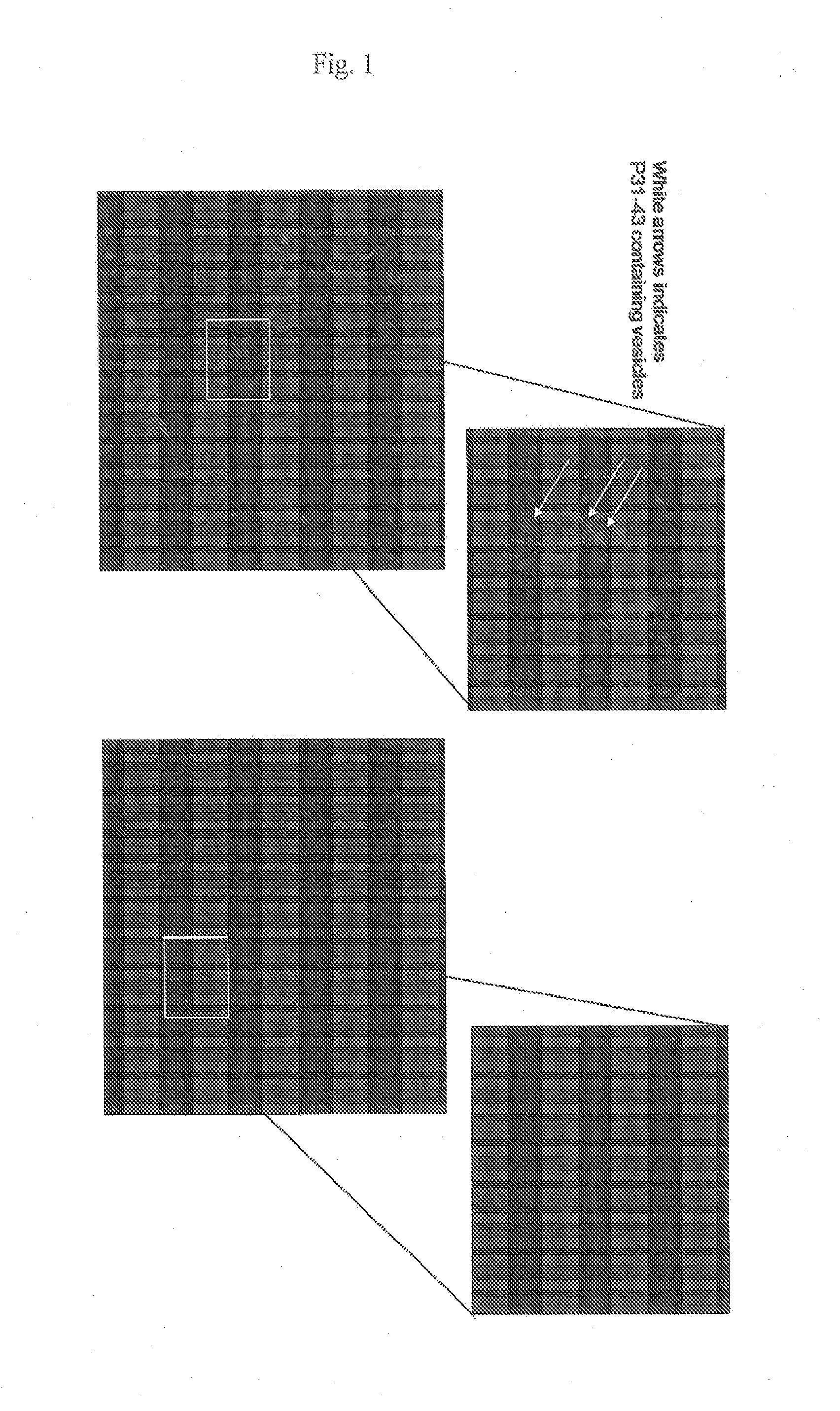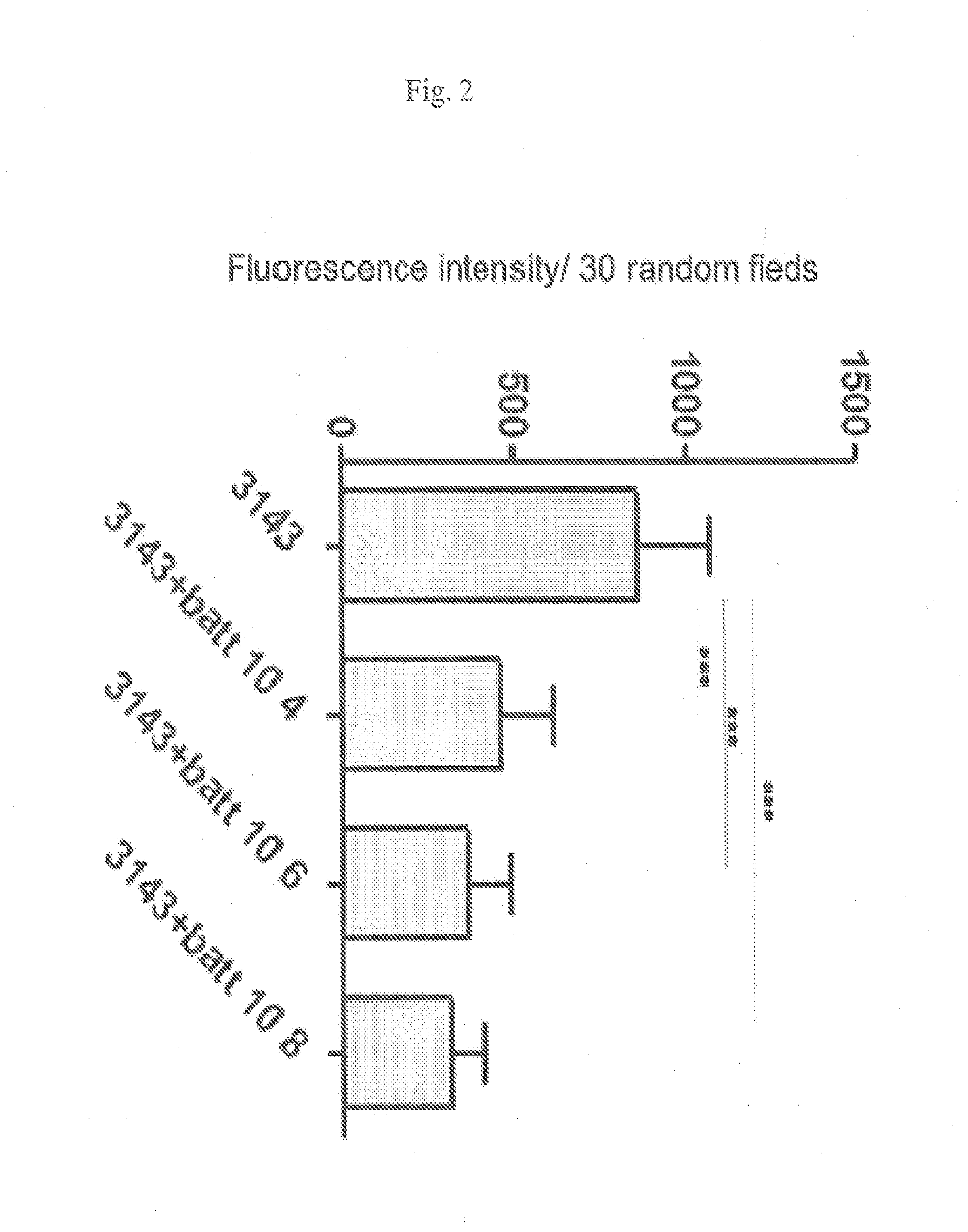Gluten-related disorders
a technology for gluten-related disorders and gliadin peptides, which is applied in the field of probiotic organisms, can solve the problems of affecting the health of patients, affecting the quality of life of patients, so as to reduce the toxicity of gliadin peptides and reduce the cellular entry of gliadin peptides
- Summary
- Abstract
- Description
- Claims
- Application Information
AI Technical Summary
Benefits of technology
Problems solved by technology
Method used
Image
Examples
example 1
Materials and Methods
[0112]Peptides: α-gliadin P31-P43 (SEQ ID NO.: 1) and P57-68 (SEQ ID NO.: 2) were synthesized in vitro and bound to the fluorochrome, lissamine, by Inbios, Naples, Italy. Chromatographic analyses indicated that the peptides were 99% pure.
[0113]Caco2 peptide entry assay: Cultures of Caco2 cells, a human epithelial colon carcinoma cell line, were incubated with the labeled peptides for 15 minutes. The labeled peptides were removed by repeated washing and the cells were examined under a confocal microscope. Morphological analysis showed that after 15 minutes of incubation, labeled peptides had entered the cells and localized to endocytotic vesicles, which appeared as small colored spots. Quantitative analysis was performed using a dedicated software package that evaluated the fluorescence intensity of multiple microscopic fields.
[0114]Caco2 cell culture: CaCo-2 cells were grown in Dulbecco's Modified Eagle's Medium (DMEM) (GIBCO, San Giuliano Milanese, Italy), 10% ...
example 2
Effect of Live L. Paracasei CBA L74 on α-Gliadin Peptide Entry
[0119]Live L. paracasei CBA L74 reduced entry of both P31-43 and P57-68 into CaCo2 cells. Confocal fluoresence images are shown in FIG. 1. Control cells (left panels) that were incubated with lissamine labeled P31-43 in the absence of L. paracasei CBA L74, showed distinct patterns of fluorescence that corresponded to P31-43 containing endocytic vesicles (white arrows). In contrast, fluorescence was reduced in cells that were incubated with lissamine labeled P31-43 in the presence of L. paracasei CBA L74 (right panels).
[0120]Quantitative analysis indicated that the effect of L. paracasei CBA L74 on entry of P31-43 was dose-dependent and statistically significant. FIG. 2 shows the results of five independent experiments on duplicate samples. Fluorescence intensity was calculated for 30 random fields in each sample. As shown in FIG. 2, treatment of CaCo2 cells with 104, 106 and 108 L. paracasei CBA L74, resulted in a statist...
example 3
Effect of L. Paracasei CBA L74 Isolated DNA on α-Gliadin Peptide Entry
[0122]DNA from L. paracasei CBA L74 was extracted and purified by standard methods. As shown in FIG. 4, treatment of CaCo2 cells with P31-43 in the presence of an amount of L. paracasei CBA L74 DNA equivalent to that of 108 cells, did not block peptide entry.
PUM
| Property | Measurement | Unit |
|---|---|---|
| Time | aaaaa | aaaaa |
| Composition | aaaaa | aaaaa |
| Sensitivity | aaaaa | aaaaa |
Abstract
Description
Claims
Application Information
 Login to View More
Login to View More - R&D
- Intellectual Property
- Life Sciences
- Materials
- Tech Scout
- Unparalleled Data Quality
- Higher Quality Content
- 60% Fewer Hallucinations
Browse by: Latest US Patents, China's latest patents, Technical Efficacy Thesaurus, Application Domain, Technology Topic, Popular Technical Reports.
© 2025 PatSnap. All rights reserved.Legal|Privacy policy|Modern Slavery Act Transparency Statement|Sitemap|About US| Contact US: help@patsnap.com



